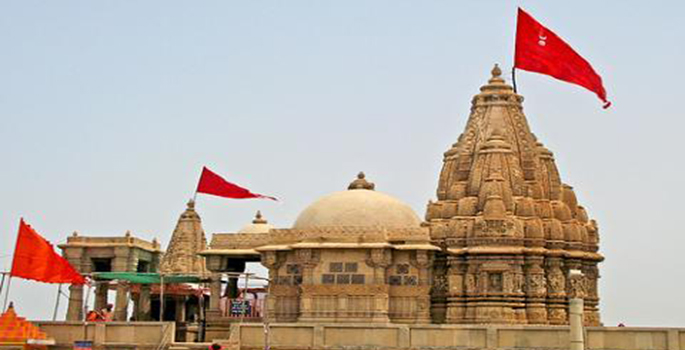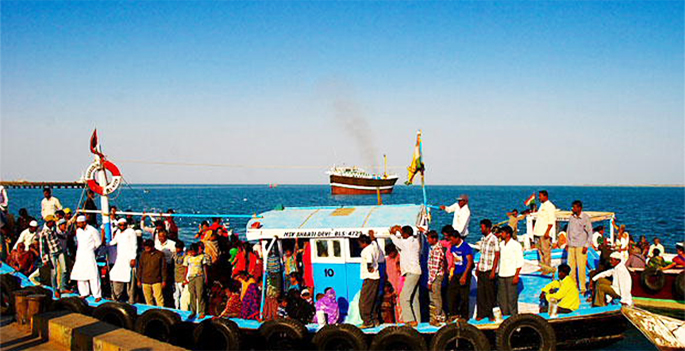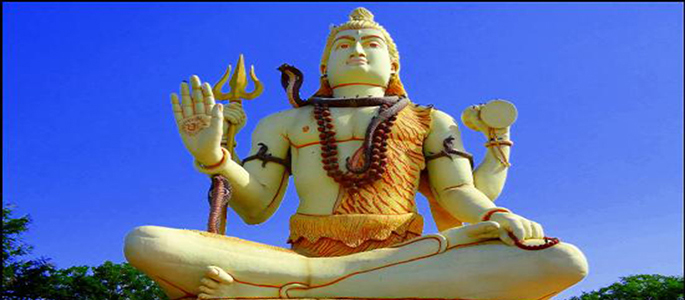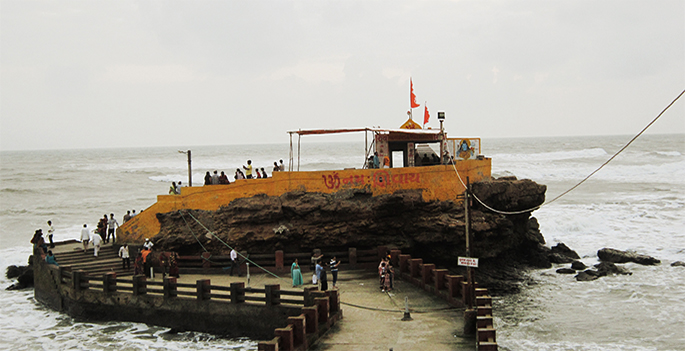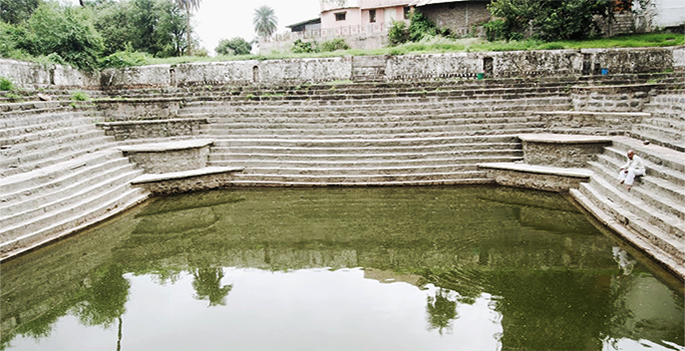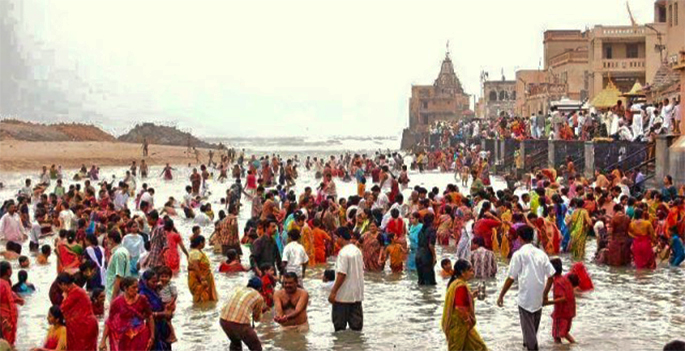Attractions
Rukmanee Mandir
"This small temple, 1.5km north of town, is an architectural masterpiece. Rukmini is the most important of Krishna's 16,108 wives. The temple walls are decorated with beautiful paintings depicting her pastimes with Krishna. This temple is said to date back to the 12th century"The story behind this temple is that one day, Durvasa Muni, who is easily angered, was invited by Lord Krishna and his wife, Rukmini, to dinner. When a person is invited to dinner, etiquette dictates that the host should not eat until the guest has been satisfied. On the way to dinner, Rukmini became thirsty and asked Krishna for help. Krishna then put his foot in the ground and the Ganges waters flowed forth from the earth while Durvasa was not looking. As Rukmini was drinking the water, however, Durvasa turned and saw her drinking without his permission. He became angry and cursed her to live apart from Lord Krishna. That is why Krishna's temple is in the town and hers is located outside the town.
Bet Dwarka
"Bet Dwarka or Shankhodhar is an inhabited island at mouth of Gulf of Kutch situated 3 km (2 mi) off the coast of Okha, Gujarat, India. The island is measured northwest to southeast in 13 km (8 mi) with an average 4 km (2 mi) in east-west direction. It is a strip of sand and stone situated 30 km (19 mi) north of town of Dwarka."Bet Dwarka is considered the part of the ancient city in Indian epic literature Dvārakā found in Mahabharata and Skanda Purana. Gujarati scholar Umashankar Joshi suggested that Antardvipa in Sabha Parva of Mahabharata can be identified as Bet Dwarka as Yadava of Dwarka said to travel to it by boats. It derived its name Shankhodhar as the island is a large source of conch shells (Shankh). Archeological remains found under the sea suggest the existence of settlement during Late Harappan period of Indus Valley Civilization or immediately after it. It can be reliably dated to times of Maurya Empire.
Nageshwar Shiva Temple
"Nageshwar Temple or Nagnath Temple is located on the route between Gomati Dwarka and the Bait Dwarka Island on the coast of Saurashtra in Gujarat. The Jyotirlinga enshrined in the Temple of Nagnath is known as Nageshwar Mahadev and attracts thousands of pilgrims all round the year."According to Shiv Purana, a Shiva devotee by name Supriya was attacked by a demon Daaruka while in a boat. The demon imprisoned him along with several others at his capital Daarukaavana where he resided with his wife Daaruki. Supriya advised all prisoners to recite the mantra ‘Aum Namaha Shivaya’. When Daruk came to know about this he ran to kill Supriya. Instantly Lord Shiva appeared in the form of a Jyotirlingam and vanquished the demon with the Paasupata Astram.
Bhadkeshwar Mahadev
"The temple is on the hillock in the sea. The revered temple is behind the Geeta Mandir, in the west of Dwarka. During the high tide the temple gets surrounded by water, but at the time of ebb when the water level come backs to normal one can reach there very easily. "There are steps to get into the temple. Chandra-Mouliswar Shiva is the presiding deity at the core of the temple. The deity form was found at the confluence of Gomati, Ganga and Arabian Sea by the Acharya Jagatguru Sankaracharya himself. In addition, there are 1200 Salgramshilas, 1300 Shiva Lingas, metal forms of 75 Sankaracharyas. It is a memorable experience to get the darshan form the sea and or just watching the sea from the island. A fair takes palace here on the day of mahashivratri when thousands throng to pay respect to Lord Shiva.
Gomati Kund
"Gomati Kund is one of the important holy spots by the Gomti river bank because, this was the place where Durvasa was served by the lord himself. Gomati Kund is not only the place of religious importance, but people also come here to take a look at the merger of this river with the Arabian sea."Gomati Kund is one of the important holy spots by the Gomti river bank because, this was the place where Durvasa was served by the lord himself. Gomati Kund is not only the place of religious importance, but people also come here to take a look at the merger of this river with the Arabian sea. The belief is that if you visit this place once, your sins will get washed away. And it is believed that if you go to Dwarka, you should definitely visit this place and take a bath in the river.
Lighthouse Dwarka
"A port was developed in the early 19th century at nearby Rupen creek. A flag mast was provided at the port to hoist a lamp which served the purpose of lighthouse. "In the year 1866 a square masonry tower 18m high was constructed at the present site. An oil wick lamp inside a 6th order optic was installed on the tower. On 29th November 1877 then Governor of Bombay Sir Richard Temple came to Dwarka by sea route. He visited Dwarka lighthouse also and observed the light to be grossly inadequate. Subsequently a PV equipment with 4th order revolving optic supplied by M/s. Chance Bros., England replaced wick lamp in 1881.Minor modifications were also carried out in 1900
Gomti Ghat
"The Gomti, Gumti or Gomati River is a tributary of the Ganga River. According to Hindu mythology the river is the daughter of Sage Vashist, and bathing in the waters of the Gomati on Ekadashi (the eleventh day of the Sanatana Dharma-Hindu calendar) can wash away one's sins."The Gomti a monsoon and ground water fed river originates from Gomat Taal which formally known as Fulhaar jheel, near Madho Tanda, Pilibhit, India. It extends 960 kilometres (600 mi) through Uttar Pradesh and meets the Ganges River near Saidpur, Kaithi in Varanasi district.After 20 kilometres (12 mi) from its origin, a very small river, the Gaihaaee, meets it. The river is a thin stream until it reaches Mohammadi Kheri (about 100 km from its origin), a tehsil of Lakhimpur Kheri district, where it is joined by some tributaries like Sukheta, Choha and Andhra Choha. From here the river is well defined, whereas other tributaries join this river downstream. These are Kathina at Mailani and Sarayan at a village in Sitapur district.

